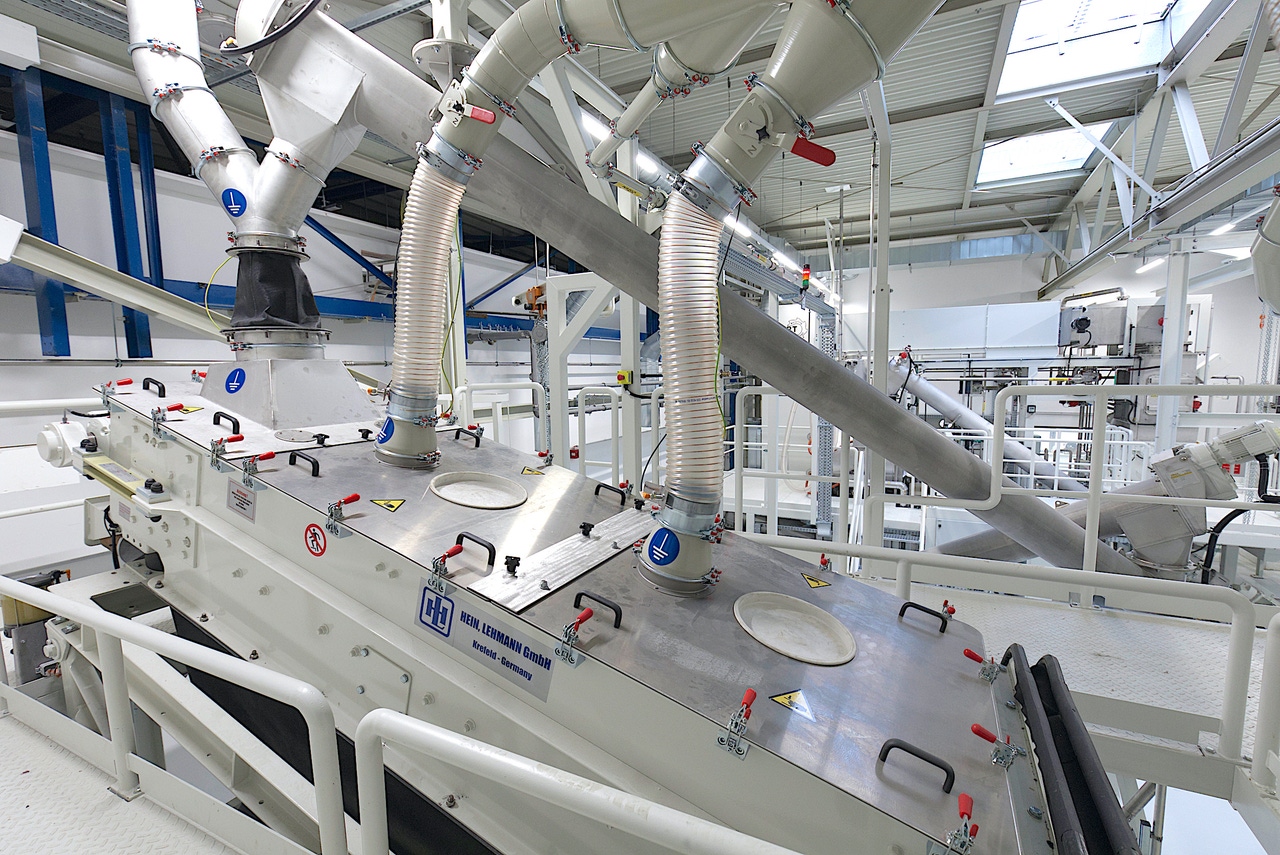The Role Of Battery Recycling In The Circular Economy: Part 3 - The Role of Policy

Editor's Note: The Role Of Battery Recycling In The Circular Economy is a three-part series. Part 1 focuses on Key Technologies. Part 2 focuses on the Battery Supply Chain, Logistics and Profitability. Part 3 focuses on Challenges and the Role of Policy.
Battery chemistries are changing rapidly, and battery designs with significantly lower cobalt content could dramatically impact profitability. One of the biggest challenges these companies face is inhomogeneous input material. Furthermore, solid state or lithium metal designs might not be easily incorporated into the current recycling process. In response, companies such as Li-Cycle are accounting for diverse inputs with blending procedures. The consensus amongst interviewees was that they will have sufficient time to redesign or add on new processes if solid state batteries become dominant, as the output for recycling will reach higher volume towards the end of this decade.
Currently, there are multiple standard packaging approaches, and Li-Cycle and others have designed their process to accommodate intake of different cell and pack designs. However, consistency in design at the module and pack level will be critical for recycling at scale. Another challenge for all companies is timing operations and spending to the projected growth of EVs and in turn the growth of retired batteries. For many startups in this space, there is a large upfront investment to build out the logistics and capital equipment. While each startup has approached capital requirements differently, most have relied on initial investments from the government and strategic partners. For example, AMBC was funded through a DOE AMO grant with Dupont for $4.5M to cover pilot costs for its primary lithium extraction system. Additionally, companies are slowly expanding scale to reduce risk and upfront costs.
In addition to financial capital and plant capacity, human capital and partnerships are critical as these companies scale. These companies need highly diverse skill-sets to succeed, from battery chemistry and operations to recycling process engineering and commercial development. Moreover, partnerships and integration across the full supply chain must be considered. All startups are prioritizing opportunities to work with OEMs for sourcing, currently the largest supply of input material. Recyclers may also be working with raw materials suppliers to “top up” formulations if providing cathodes as an output. While the industry is still nascent, the ability to lock in critical partnerships to source manufacturing scrap or end-of-life batteries can have a long-term impact on the market.
“[With increased recycling] we can pull down the CO2 footprint …[to] about 200 to 250 kilograms [reduction] per ton of batteries," says Chris Reed, managing director, Neometals The Role of Policy.
Policies can help channel spent batteries to second-use applications or recycling [13]. Past efforts have typically focused on lead-acid batteries. Currently, lead acid batteries have a recycling rate of almost 100% in North America and Europe with no need for additional mining of lead. However, studies have shown that without proper regulation and enforcement, 90% of lead batteries in India end up processed by unregulated small-scale operations that can pose a lethal threat due to lead poisoning [14]. Additionally, given their uniform design and consistent chemistry, recycling of lead acid batteries is much simpler, and policy may need to play a more substantial role to reach similar recycling rates for Li-ion batteries.
Policies that give meaningful incentives to hold producers and manufacturers responsible for end-of-life batteries can accelerate sustainability targets. In 2016, China mandated extended producer responsibility (EPR) [15], requiring battery producers or third parties acting on their behalf, to bear the cost of collecting, sorting, treating, and recycling waste batteries. In 2020, China established a credit record system for the prevention and control of solid waste (including waste Li-ion batteries) pollution [15]. The EU has regulations that will require declarations of CO2 footprint per battery by 2024 and recycled content by 2027. In the US, the California Assembly Bill 2832 requires the formation of a Li-ion Car Battery Recycling Advisory Group to advise the legislature on a Li-ion battery recycling policy for EVs. President Biden is making batteries a key component of his carbon-neutrality strategy, suggesting that domestic production — rather than relying on Chinese and Korean imports — could create jobs. Right now, Chinese companies, including CATL, BYD, and Hefei Guoxuan High-Tech, produce 79% of the world’s batteries, whereas domestic manufacturers only account for 7% [16].
“More manufacturing in the US is needed to make the battery industry fully circular and vertically integrated," says Megan O’Connor, CEO/founder, Nth Cycle.
Several trends suggest that the US is on a good trajectory in strengthening its battery supply chain, but more government action can be placed around recycling. Currently, the US offers exemptions to purchase EVs in 39 states. Similarly, recycling credits with different content standards can be considered to directly address landfilling and cover disposal tipping costs. Regulations could incentivize Li-ion battery recycling by pricing spent EV batteries, making it attractive for either automobile OEMs to recycle their own batteries (to keep their EVs cost-competitive) or for recyclers to develop another revenue stream. Funding from the government, such as the Defense Production Act, is crucial to build up the infrastructure to allow stakeholders to participate in the recycling network.
A holistic approach in policy that considers the whole value chain of battery production, manufacturing, and recycling is necessary. For instance, both Nth Cycle and Redwood Materials pivoted from rare earth minerals to Li-ion battery recycling as they realized that rare earth minerals would have to be sent back to China for refining and purification to meet requirements for high-tech consumer devices manufactured in America. Regulations can be placed on tracking and transparency around ethical raw material sourcing, CO2 footprint, and recycled content declarations. For example, Tesla is collecting data from relevant suppliers using the Responsible Minerals Initiative’s (“RMI”) Cobalt Reporting Template because they recognize the higher risks of human issues within cobalt supply chains. Setting standard metrics and incorporating mass balance approaches can help ease integration and enable brands to meet content pledges. EV companies, particularly in the US, are likely under the highest regulatory pressure to incorporate recycled content and to promote increased battery production and/or recycling in the US. In response, they may initiate alliances across the value chain to own materials throughout their closed-loop cycle for essentially infinite reuse to maintain resiliency.
Conclusions
The companies interviewed have all taken different approaches to address the battery recycling challenge. All rely on multiple revenue streams to accommodate price fluctuations for commodity metals. To source materials, these companies are relying on aggregators who already collect batteries to produce black mass or developing relationships with OEMs to collect manufacturing scrap. Understanding and optimizing infrastructure will be critical for profitability, noted by Li-Cycle’s
investments in both centralized (hydrometallurgical) and distributed (battery collection) logistics.
In the short term, Nth Cycle is best suited for profitability given the high margins and low amount of material needed to operate. In the long term, companies relying on hydrometallurgical processes will need on the order of 20,000-60,000 tons to reach economies of scale. These companies are not necessarily competing with each other yet, but rather with the landfill as their current scale is dwarfed by auto-makers, cathode companies, and cell companies. Furthermore, these companies can benefit from collaboration. Nth Cycle’s approach could be combined with other recyclers and other companies can pool logistics to transport aggregated waste.
Depending which stakeholder(s) recyclers provide material to, the end requirements change. The highest value can be obtained by providing material directly back to cathode manufacturers, but this requires high-purity (99.9% or greater) material, typically in sulfate form, with low levels (ppm) of competing transition metals. If supplied in cathode form rather than as a raw material (from direct recycling), morphology and overall ratios of materials must be maintained, which likely requires pre-processing steps. For example, ReCell Center uses a relithiation process. If materials cannot meet these stringent specifications, they are typically sold back into industrial applications. Nth Cycle’s cobalt hydroxide, while higher grade than typical mining output, would need to be upgraded by a smelter to battery specifications.
Considering battery recycling in the context of broader circular economy principles, it’s important to think holistically about the processes employed and all input and output streams. The battery manufacturing supply chain will still require virgin material input to meet demands and quality requirements for the foreseeable future. Active cathode material, aluminum, and the energy required for cell production are the major energy and environmental contributors based on lifecycle analysis, the exact impact heavily dependent on sourcing geography and processing [17]. Additionally, wastewater management is a key component for the overall lifecycle analysis of either approach. Battery recycling is both a dramatic opportunity and a necessity for the clean energy transition. The
question is not if Li-ion batteries will be (almost) fully recycled, but when and who will dominate this industry. Innovative entrepreneurs, like the ones interviewed for this article, will pave the path forward in addressing this challenge. Policy can influence the rate of adoption and the role that the US will play across the battery value chain.
Recycling processes are not inherently clean and primary virgin mining processes are not inherently dirty. [The key is figuring out how to extract] the highest quality products, at the lowest cost, and with the lowest environmental footprint," says Ryan Melsert, CTO, ABMC.
[13] Global EV Outlook 2020 – Analysis. (2020, June). IEA.
https://www.iea.org/reports/global-ev-outlook-2020
[14] Mahesh, P. B. (2019). Loaded Batteries: Mapping the Toxic Waste Trail. Toxics Link.
http://toxicslink.org/docs/Lead%20Acid%20Batteries%20Report.pdf
[15] Sun, S., Jin, C., He, W., Li, G., Zhu, H., & Huang, J. (2021). Management status of waste
lithium-ion batteries in China and a complete closed-circuit recycling process. Science of The Total
Environment, 776, 145913. https://doi.org/10.1016/j.scitotenv.2021.145913
[16] Cohen, A. (2021, February 11). What Batteries Will Power The Future? Forbes.
https://www.forbes.com/sites/arielcohen/2021/02/11/what-batteries-will-power-the-future/?sh=4118ee
ac41c0
[17] Dai, Q., Kelly, J. C., Gaines, L., & Wang, M. (2019). Life Cycle Analysis of Lithium-Ion Batteries
for Automotive Applications. Batteries, 5(2), 48. https://doi.org/10.3390/batteries5020048
About the Authors
You May Also Like






.png?width=300&auto=webp&quality=80&disable=upscale)